Nikon D300
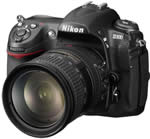 The Nikon D300 is a 12.3 megapixel DSLR camera that offers 6fps continuous shooting and a 51 point autofocus system. Other standout features of the Nikon D300 include a 3 inch VGA LCD screen with Live View, self-cleaning sensor unit, expandable ISO settings from 200-3200, and new EXPEED image processing system with 4-bit analog-to-digital (A/D) conversion. “The D300 is a true ‘go-anywhere’ camera, delivering fast response, high performance and ease of use that will appeal to anyone serious about their photography.” said Robert Cristina, Brand Manager, Nikon Professional Products, Europe. Available in November, the Nikon D300 body only has a guide price of £1299.99 / €1980 / $1,799.95. There are some product shots taken at this morning’s UK press launch after the jump.
The Nikon D300 is a 12.3 megapixel DSLR camera that offers 6fps continuous shooting and a 51 point autofocus system. Other standout features of the Nikon D300 include a 3 inch VGA LCD screen with Live View, self-cleaning sensor unit, expandable ISO settings from 200-3200, and new EXPEED image processing system with 4-bit analog-to-digital (A/D) conversion. “The D300 is a true ‘go-anywhere’ camera, delivering fast response, high performance and ease of use that will appeal to anyone serious about their photography.” said Robert Cristina, Brand Manager, Nikon Professional Products, Europe. Available in November, the Nikon D300 body only has a guide price of £1299.99 / €1980 / $1,799.95. There are some product shots taken at this morning’s UK press launch after the jump.
Nikon UK Press Release
Nikon launches the D300
Guide price: D300 body only £1299.99 / €1980*
*full list pricing, including lens, accessories and bundles will be available in September
Nikon is pleased to announce the D300 digital single lens reflex (D-SLR), a camera that sets new standards of compact professional performance. The easy-to-use DX-format D300 offers outstanding image quality, multi-functional technologies and fast response. With class-leading 12.3 megapixel resolution, speedy 6 fps frame advance, self-cleaning sensor unit and high definition 3” VGA LCD display, combined with Nikon’s legendary durability, the D300 is a breakthrough solution for photographers searching for an advanced compact SLR.
“Packed with the latest technologies and Nikon’s renowned ergonomics, the D300 sets a new standard for professionals on a budget,” said Robert Cristina, Brand Manager, Nikon Professional Products, Europe. “The D300 is a true ‘go-anywhere’ camera, delivering fast response, high performance and ease of use that will appeal to anyone serious about their photography.”
Speed and Performance
The D300 is loaded with the latest professional technologies designed to produce images of the highest quality. The high-resolution 12.3 MP DX format CMOS sensor generates image files suitable for almost every type of output, combined with a fast standard frame advance rate of 6fps (up to 8 fps with optional Multi Power Battery Pack). The D300 offers fast power-up, quick response and outstanding flexibility to meet the needs of a wide variety of photographic assignments. The D300 powers-up in just 0.13 seconds, with an almost imperceptible 45 millisecond shutter lag.
Accuracy
The D300 boasts a self-cleaning sensor unit, which vibrates at high frequencies to remove any loose dust on the surface of the sensor’s optical low pass filter. The camera has a broad ISO range from 200-3200 plus Lo 1 (the equivalent of an ISO 100) and Hi (ISO 6400 equivalent). Image accuracy is also enhanced by the new Nikon Scene Recognition System, which uses the acclaimed Nikon 1005-pixel RGB colour sensor modified to recognise subjects’ shape and position before the image is captured. This also aids the new 51-Point Autofocus system in tracking subjects by their colour, while enhancing the accuracy of exposure and white balance metering. The D300 also offers Live View, which presents photographers with a live image on the LCD screen, with two modes suited to either hand held or tripod shooting. Autofocus is possible in both Live View modes.
Enhanced Images with EXPEED
The EXPEED image processing system is at the heart of the D300’s ability to capture and process high definition image data so quickly. The EXPEED system includes both hardware and years of Nikon image processing expertise. The D300 EXPEED system features 14-bit analog-to-digital (A/D) conversion with 16-bit image processing, both of which contribute to delivering results with Nikon’s signature ‘look and feel’ of rich accurate colours, smooth skin gradations and exceptional detail.
Ready for tomorrow
The D300 is completely high definition. From the 3-inch VGA LCD screen with 170-degree viewing angle, to the HDMI interface for HD ready displays, the D300 is ready for tomorrow’s imaging environment. The controls of the D300 were designed for ease of use, with an easy-to-view top LCD panel and an information display on the rear LCD screen that can change colour according to the ambient lighting conditions. The totally intuitive 8-directional multi-area selector makes selecting any of the 51-Point autofocus settings simplicity itself.
Durable and Dependable
The D300 continues Nikon’s long tradition of sturdiness and durability. The camera body is built from a magnesium alloy, while the camera’s shutter has been tested for 150,000-release cycles. The D300 is also designed for a high level of dust and water resistance.
Total Imaging System
Like the D3, the D300 isn’t just a camera, but part of a complete Nikon system to help photographers create great images. The D300 is compatible with the Nikon Total Imaging System of NIKKOR lenses, Speedlights, accessories and software that provides a complete solution for any photographic challenge.
One accessory that can extend shooting life, add ergonomic vertical shooting practicality and increase frame rate to up to 8 fps* is the MB-D10 optional Multi-Power Battery Pack. The compact MB-D10 simply attaches to the base of the camera. Unlike other grips, the MB-D10 does not occupy the camera’s battery space, so one can shoot with two EN-EL3e batteries, or add a powerful EN-EL4a battery into the mix. The D300 and MB-D10 can also be powered by AA size batteries as well. *Requires EN-EL4a.
Wireless Networking
Nikon pioneered wireless image transmission. Now, with the new Nikon Wireless Transmitter WT-43, the era of the multi camera network has arrived. Not only can one transmit (‘push’) images to servers and remotely control the camera from afar, the WT-4 also enables remote browsing of the camera’s image thumbnails as well. In a wireless environment, networks of up to 5 D300 cameras can be established and image thumbnails from all connected cameras browsed simultaneously and relevant image files ‘pulled’, while the photographers continue shooting.
The D300 body measures 147.2 (W) ×112.8 (H) × 74(D) mm and weighs just 795 grams.
Nikon has taken every effort to ensure that the claims and specifications are accurate at time of writing, they remain subject to change without any notice or obligation on the part of the manufacturer.
For more information about Nikon’s award winning products please visit: www.nikon.co.uk
D300 Specifications
Type of Camera
Single-lens reflex digital camera
Effective Pixels
12.3 million
Image Sensor
CMOS sensor, 23.6 x 15.8 mm; total pixels: 13.1 million; Nikon DX format
Image Size (pixels)
4,288 x 2,848 [L], 3,216 x 2,136 [M], 2,144 x 1,424 [S]
Dust-reduction System
Clean image sensor,
Image dust-off data acquisition (Capture NX required)
Sensitivity
ISO 200 to 3,200 in steps of 1/3, 1/2 or 1 EV with additional settings of approx. 0.3, 0.5, 0.7 and 1 EV (ISO 100 equivalent) under ISO 200, and approx. 0.3, 0.5, 0.7 and 1 EV (ISO 6400 equivalent) over ISO 3200
File System
Compliant with DCF 2.0, DPOF and Exif 2.21
Storage System
NEF 12-bit or 14-bit (uncompressed, lossless compressed or compressed RAW)
TIFF (RGB)
JPEG: JPEG baseline-compliant
Storage Media
CompactFlash (Type I/II, compliant with UDMA); Microdrives
Release Modes
1) Single frame [S] mode 2) Continuous low speed [CL] mode: 1 to 7*1 frames per second 3) Continuous high-speed [CH] mode: 8 frames per second*1, 6 frames per second*2 4) Liveview [LV] mode 5) Self-timer [ ] mode 6) Mirror-up [Mup] mode
*1. When using AC Adaptor EH-5a/EH-5 or Multi-Power Battery Pack MB-D10 with batteries other than Rechargeable Li-ion Battery EN-EL3e
*2. When using Rechargeable Li-ion Battery EN-EL3e
(When shooting in Continuous-servo AF (C), Shutter-Priority Auto [S] or Manual [M] exposure modes, at a shutter speed of 1/250 sec. or faster with other settings at default)
White Balance
Auto (TTL white balance with 1,005-pixel RGB sensor), seven manual modes with fine-tuning, color temperature setting, white balance bracketing possible (2 to 9 frames in increments 1~3)
Liveview
Handheld mode: TLL phase-difference AF with 51 focus areas (15 cross-type sensors)
Tripod mode: focal-plane contrast AF on a desired point within a specific area
LCD Monitor
3-in., approx. 920,000-dot (VGA), 170-degree wide viewing angle, 100% frame coverage, low-temperature polysilicon TFT LCD with brightness adjustment
Playback Function
1) Full frame 2) Thumbnail (4 or 9 segments) 3) Zoom 4) Slideshow 5) RGB histogram indication
6) Shooting data 7) Highlight point display 8) Auto image rotation
Delete Function
Card format, All photographs delete, Selected photographs delete
Video Output
NTSC or PAL; simultaneous playback from both the video output and on the LCD monitor available
HDMI Output
Supports HDMI version 1.3a; Type A connector is provided as HDMI output terminal; simultaneous playback from both the HDMI output terminal and on the LCD monitor not available
Interface
Hi-Speed USB
Text Input
Up to 36 characters of alphanumeric text input available with LCD monitor and multi-selector; stored in Exif header
Lens Mount
Nikon F Mount with AF coupling and AF contacts
Compatible Lenses
1) DX AF NIKKOR: All functions possible
2) D-/G-type AF NIKKOR (excluding IX NIKKOR lenses): All functions possible (excluding PC Micro- NIKKOR)
3) AF NIKKOR other than D-/G-type (excluding lenses for F3AF): All functions except 3D-Color Matrix Metering II possible
4) AI-P NIKKOR: All functions except Autofocus, 3D-Color Matrix Metering II possible
5) Non-CPU AI NIKKOR: Can be used in exposure modes A and M; electronic range finder can
be used if maximum aperture is f/5.6 or faster; Color Matrix Metering and aperture value display supported if user provides lens data
Picture Angle
Equivalent in 35mm [135] format is approx. 1.5 times lens focal length
Viewfinder
SLR-type with fixed eye-level pentaprism; built-in diopter adjustment (-2.0 to +1.0 m-1)
Eyepoint
19.5 mm (-1.0 m-1)
Focusing Screen
Type-B BriteView Clear Matte screen Mark II with superimposed focus brackets and On-Demand grid lines
Viewfinder Frame Coverage
Approx. 100% (vertical and horizontal)
Viewfinder Magnification
Approx. 0.94x with 50mm lens at infinity; -1.0 m-1
Autofocus
?TTL phase detection, 51 focus points (15 cross-type sensors) by Nikon Multi-CAM 3500DX autofocus module; Detection -1 to +19 EV (ISO 100 at 20°C/68°F); AF fine adjustment possible
?Focal plane contrast [in Liveview (Tripod) mode]
Lens Servo
Autofocus: Single-servo AF (S); continuous-servo AF (C); focus tracking automatically activated according to subject status, 2) Manual focus (M) with electronic rangefinder
Focus Point
Single AF point can be selected from 51 or 11 focus points
Liveview (Tripod mode): Contrast AF on a desired point within entire frame
AF Area Mode
1) Single point AF 2) Dynamic Area AF [9 points, 21 points, 51 points, 51 points (3D-tracking)] 3) Automatic-area AF
Focus Lock
Focus can be locked by pressing shutter-release button halfway (single-servo AF) or by pressing AE-L/AF-L button
Exposure Metering System
TTL full-aperture exposure metering using 1005-pixel RGB sensor
1) 3D Color Matrix Metering II (type G and D lenses); color matrix metering II (other CPU lenses); color matrix metering (non-CPU lenses if user provides lens data; metering performed)
2) Center-weighted: Weight of 75% given to 6, 8, 10, or 13 mm dia. circle in center of frame or weighting based on average of entire frame (8 mm circle when non-CPU lens is used)
3) Spot: Meters approx. 3 mm dia. circle (about 2.0% of frame) centered on selected focus point (on center focus point when non-CPU lens is used)
Metering Range
1) 0 to 20 EV (Matrix or center-weighted metering), 2) 2 to 20 EV (Spot metering) (ISO 100 equivalent, f/1.4 lens, at 20°C/68°F)
Exposure Meter Coupling
Combined CPU and AI
Exposure Modes
1) Programmed Auto [P] with flexible program 2) Shutter-Priority Auto [S] 3) Aperture Priority Auto [A] 4) Manual [M]
Exposure Compensation
±5 EV in increments of 1/3, 1/2 or 1 EV
Exposure Lock
Exposure locked at detected value with AE-L/AF-L button
Exposure Bracketing
Exposure and/or flash bracketing (2 to 9 exposures in increments of 1/3, 1/2, 2/3 or 1 EV)
Picture Control System
Four setting options: Standard, Neutral, Vivid, Monochrome; each option can be adjusted
Shutter
Electronically-controlled vertical-travel focal plane shutter, 1/8,000 to 30 sec. in steps of 1/3, 1/2 or 1 EV, Bulb
Sync Contact
X=1/250 sec.; flash synchronization at up to 1/320 sec. (FP) adjustable with Built-in Speedlight or optional Speedlight (will reduce GN)
Flash Control
1) TTL: TTL flash control by 1,005-pixel RGB sensor
Built-in Speedlight, SB-800, SB-600 or SB-400: i-TTL balanced fill-flash and standard i-TTL flash
2) AA (Auto Aperture-type) flash: Available with SB-800 used with CPU lens
3) Non-TTL Auto: Available with Speedlights such as SB-800, 28, 27, and 22S
4) Range-priority manual flash; available with SB-800
Flash Sync Mode
1) Front-curtain Sync (normal) 2) Red-eye Reduction 3) Red-eye Reduction with Slow Sync 4) Slow Sync 5) Rear-curtain Sync
Built-in Speedlight
Manual pop-up with button release
Guide number
(ISO 200, m): approx. 17 (manual 18)
(ISO 100 equivalent, m): approx. 12 (manual 13)
Flash Compensation
-3 to +1 EV in increments of 1/3, 1/2 or 1 EV
Accessory Shoe
ISO 518 Standard hot-shoe contact with safety lock provided
Sync Terminal
ISO 519 standard terminal
Creative Lighting System
With Speedlights such as SB-800, SB-600, SB-400, SB-R200, supports Advanced Wireless Lighting, Auto FP High-Speed Sync, Flash Color Information Communication, modeling flash and FV lock
Self-timer
2 to 20 seconds duration
Depth of Field Preview
When CPU lens is attached, lens aperture can be stopped down to value selected by user (A and M mode) or value selected by camera (P and S mode)
10-pin Terminal
1) GPS: NMEA 0183 (Ver. 2.01 and 3.01) interface standard supported with 9-pin D-sub cable and GPS Cable MC-35 (optional)
2) Remote control: via 10-pin terminal
Supported Languages
Chinese (Simplified and Traditional), Dutch, English, Finnish, French, German, Italian, Japanese, Korean, Polish, Portuguese, Russian, Spanish, Swedish
Power Source
One Rechargeable Li-ion Battery EN-EL3e, Multi-Power Battery Pack MB-D10 (optional) with one Rechargeable Li-ion Battery EN-EL4a, EN-EL4 or EN-EL3e or eight R6/AA-size alkaline (LR6), Ni-MH (HR6), lithium (FR6) batteries, or nickel-manganese ZR6 batteries, AC Adapter EH-5a (optional)
Tripod Socket
1/4 in. (ISO 1222)
Custom Settings
48 settings available
Dimensions (W x H x D)
Approx. 147 x 114 x 74 mm (5.8 x 4.5 x 2.9 in.)
Weight
Approx. 825 g (1.82 lbs.) without battery, memory card, body cap, or monitor cover
Operating Environment
Temperature: 0-40°C/32-104°F, Humidity: under 85% (no condensation)
Supplied Accessories (may differ by country or area)
Rechargeable Li-ion Battery EN-EL3e, Quick Charger MH-18a, USB Cable UC-E4, Video Cable EG-D100, Strap AN-D300, LCD monitor cover BM-8, Body cap, Eyepiece Cap DK-5, Rubber Eyecup DK-23, Software Suite CD-ROM
Main Optional Accessories
Multi-Power Battery Pack MB-D10, Wireless Transmitter WT-4, Magnifying Eyepiece DK-21M, AC Adapter EH-5a, Capture NX Software, Camera Control Pro 2
CompactFlash and Extreme are registered trademarks of SanDisk Corporation. Products and brand names are trademarks or registered trademarks of their respective companies.
Specifications and equipment are subject to change without any notice or obligation on the part of the manufacturer. August 2007
©2007 NIKON CORPORATION
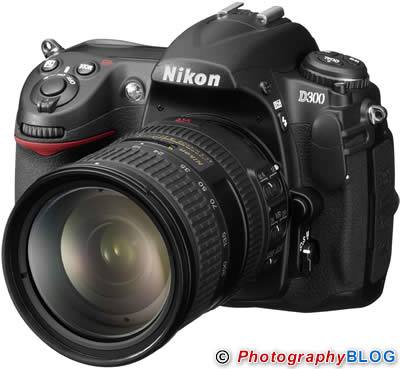
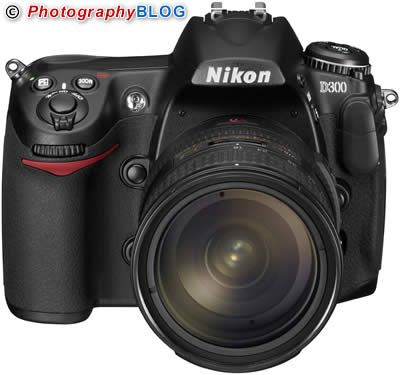
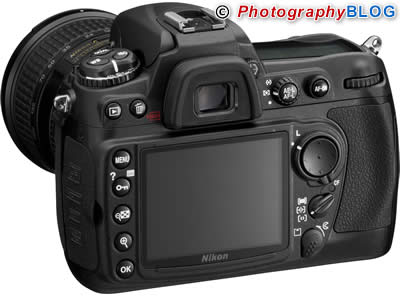
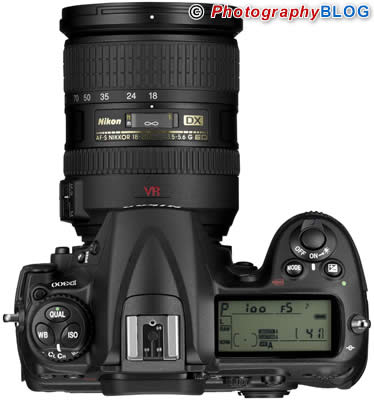
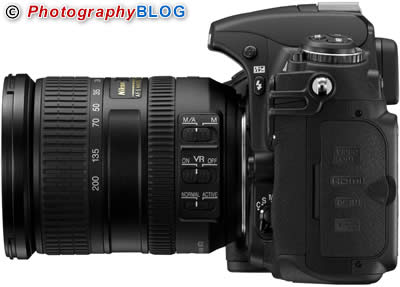
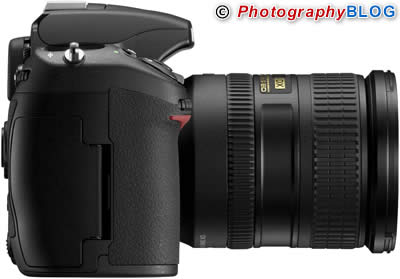
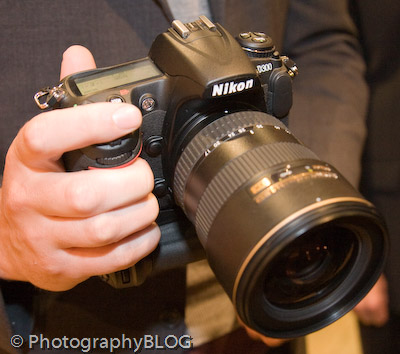
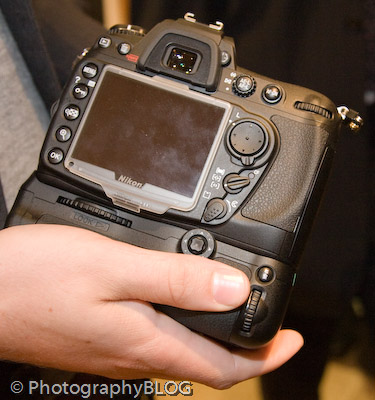
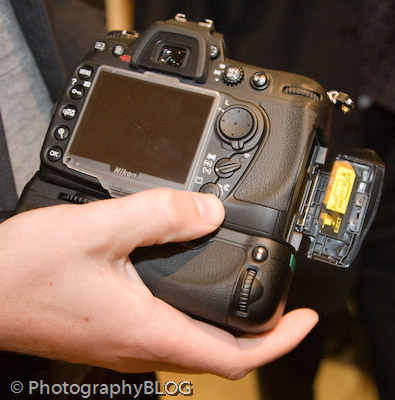
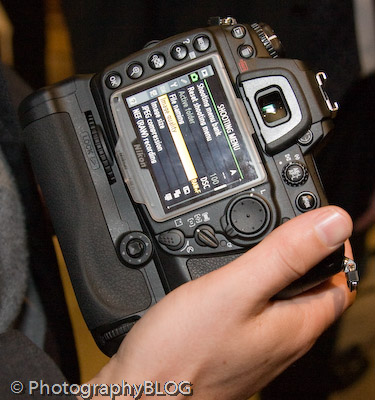
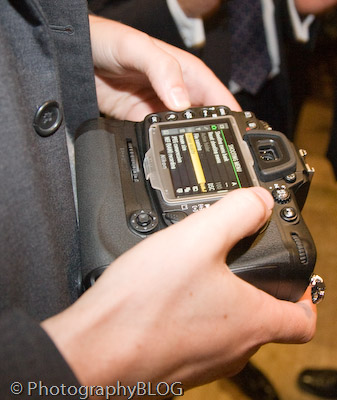
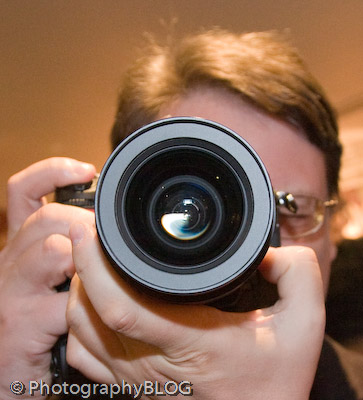
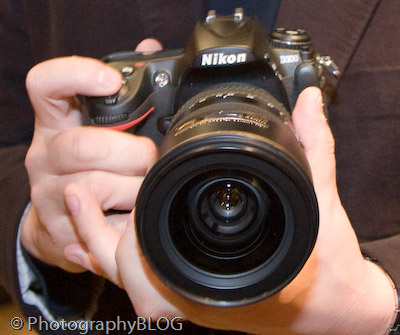


Loading comments…